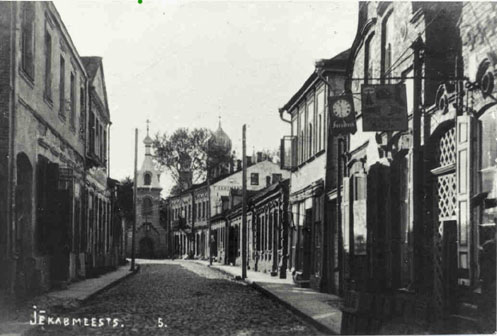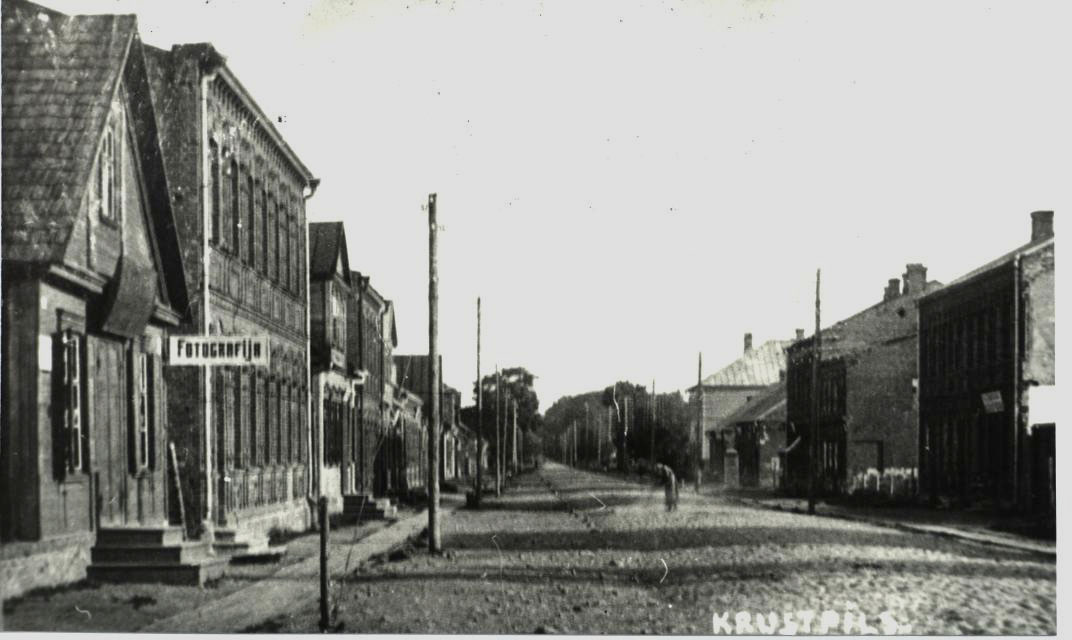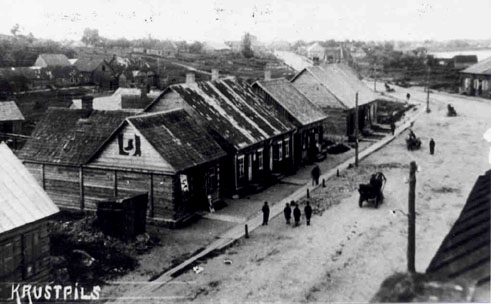Krustpils
Prior to the 1917 Russian revolution, Kreutzburg (Krustpils), a
small
shtetl, was located in the Latvian part of the Pale of Settlement and
Jekabpils,
a large town, was outside the Pale. They were separated by the Daugava
River. Jekabpils fell under Courland and Krustspils under
Vitebsk.
After 1917, the Pale was done away with and Kreutzburg (Krustpils)
became
part of Jekabpils. Prior to the Holocaust 25% of the population
of
Krustpils were Jewish. Today, there are no Jews in Krustpils.
Photos or other articles of interest to Krustspils researchers
should
be sent to me Arlene Beare.
Photos must be in jpg format and 72dpi. For publication of a photo
on the page you must obtain written permission from any living person.
Howard Margol has made this escellent contribution to the
Jekabpils/Krustspils
webpage.
He wrote -As the result of a 1993 visit to Kreutzburg, we found my
wife's 1st and 2nd cousins living in Jekabpils. We have made several
additional
trips to Jekabpils since. We have several photographs that were taken
in
Kreutzburg during the 1920's/1930's showing the main streets, shops,
etc.
The photos he sent are shown below.

Main street of Jekabpils
Taken in the 1920's

Main street of Krustspils
This photo of Rigas iela (street) in Krustpils was taken in the
1920's.
All of the houses in the photo were Jewish homes. The first house on
the
left is a Jewish house and also a photography shop. The two-story
building
on the left is a Jewish owned hotel.

[Click the picture above to get an enlarged view]
The photo was taken in the early 1900's. The wooden building on the
right, with two front doors, was owned by a Jew by the name of
FRANTZER.
He lived in the rear of the building. The door on the right was a
Jewish
book seller. The sign over the front door says, "VEIKALS SVEI"- shop of
Svei. The second door has a sign over it that says, "KONDRATA VEIKALS"
-shop of Kondrat
The 2 story building was a Latvian School. To the left of the school
building is several wooden houses. In the first one next to the school
lived Doctor Manishevitz, a dentist. In the next house lived Yossel
Yoffee.
In Latvia, and in Lithuania, the Jewish houses had the front door
close
to the street. The reason was, while they lived in the house it also
served
as their shop or store. The gentile houses had their front door on the
side of the house with plants, flowers, etc. between the house and the
street.

[Click the picture above to get an enlarged view]
This photo was taken in the early 1900's. The building on the left
was
a Jewish shoemaker. On the side of the building, you can see the
pictures
of shoes and boots. Attached to the front of the building is a small
sign
with pictures of shoes on it. To the left of the building is what
appears
to be a public outhouse (toilet). Along the walkway in front of
the
buildings are hitching posts for horses. Individuals and horse drawn
wagons
are in the street. In the extreme upper right hand corner can be seen
the
Daugava River separating KRUSTPILS from JEKABPILS.
Krustspils
There have been  visits to this
page since 31 January 2002
visits to this
page since 31 January 2002
Copyright©2002 Arlene Beare



